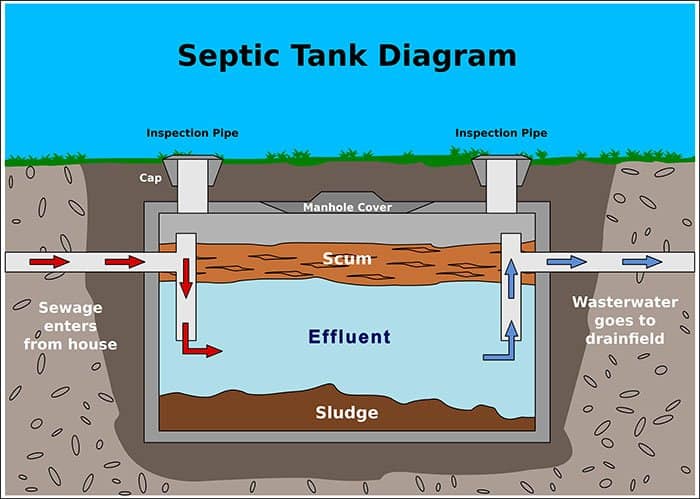
A septic system has four components that must be properly installed, designed, and maintained to work optimally. System failures can cause serious ramifications on the environment and can be costly. A septic inspection will help you detect any problem areas and negotiate the needed repairs. A septic inspection should cover the location of the septic tank and drain field lines, uncovering the manhole, inspection ports, flushing the toilets, opening sinks to ensure wastewater from the house flows out as expected, checking the tank, drain field area, measuring the scum layer, measuring the sludge layer, size, and if the structure has damage.
The size of the septic tank is determined by the number of bedrooms in the home. The inspector will know if it meets current code regulations with the county health department. Often homeowners do not increase the septic tank capacity and drain field when making home renovations. This can be a major expense and a septic inspection will reveal this needed repair prior to purchase.
Should you have a septic inspection?


 Facebook
Facebook
 X
X
 Pinterest
Pinterest
 Copy Link
Copy Link

